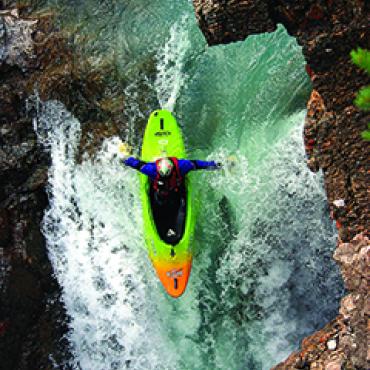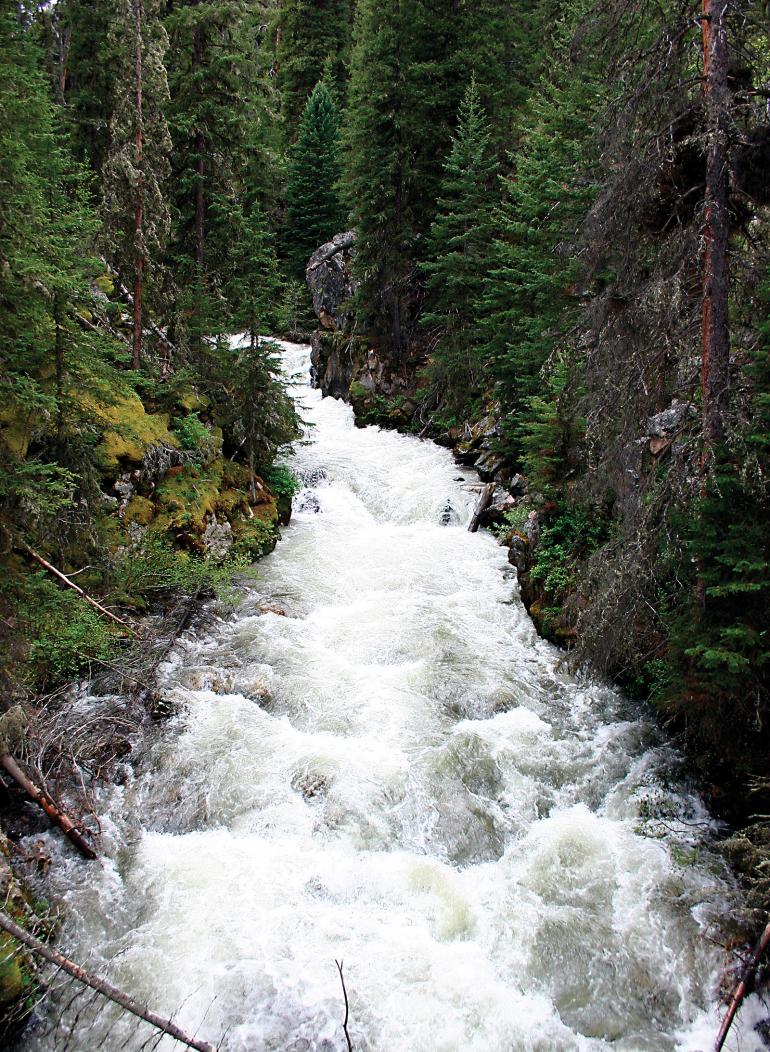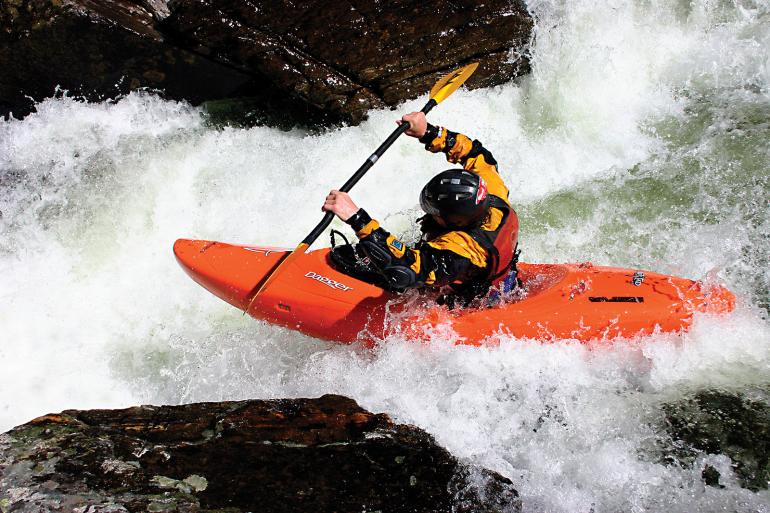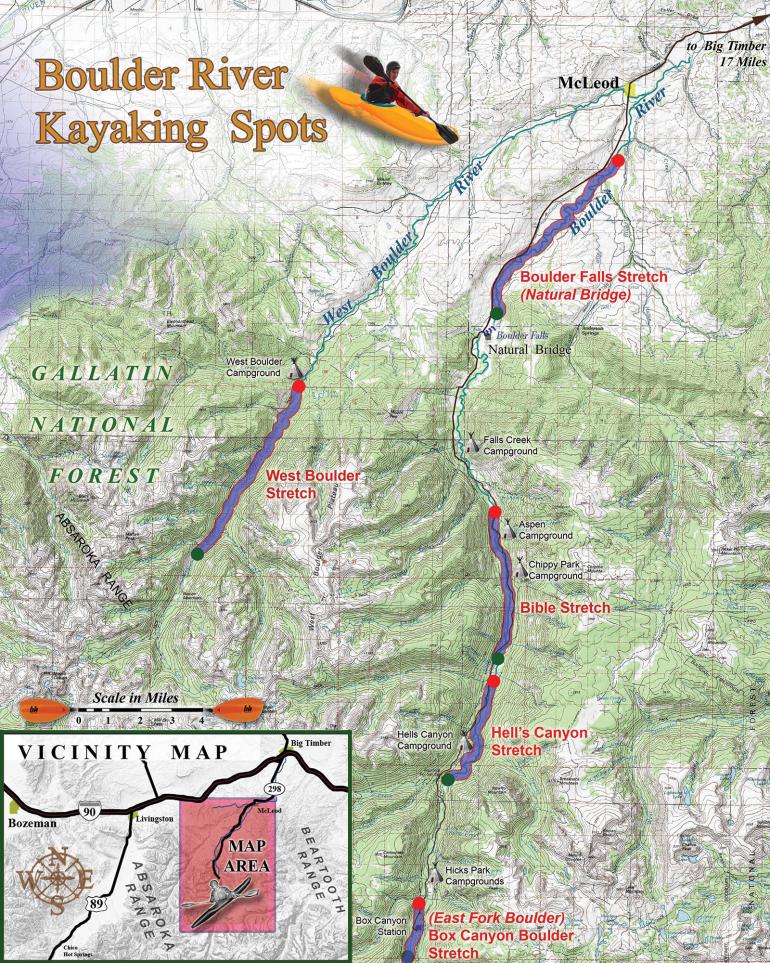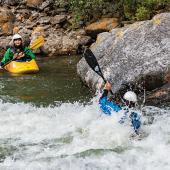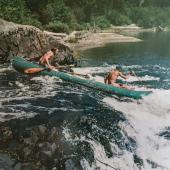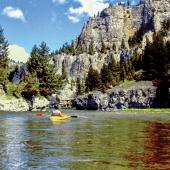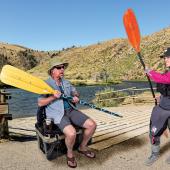Bigger and Boulder
Five of the Boulder River's best kayaking spots.
The Boulder River drainage, south of Big Timber, is a popular destination for the Montana paddling community, and for good reason. The river drains the southeastern section of the majestic Absaroka-Beartooth Wilderness and the water quality is excellent. It's great for kayakers of all skill levels and disciplines, and there are great campsites throughout the area. Most paddlers within a 100-mile radius will make the pilgrimage to this drainage at least once each paddling season, so here are some spots guaranteed to give you the ride of a lifetime.
Hell's Canyon
Most of the riveting tales that add to the Boulder's legendary reputation begin deep in the bowels of Hell's Canyon, a challenging class IV-V section that at higher flows is a never-ending procession of exploding haystacks and vicious hydraulics. Every time I find myself on this river at high flows, the same question circles through my head and slides silently past my lips like a desperate, record-skipping mantra: "What the hell am I doing in here?" "#@%^%#$%%!" "What the hell am I doing in here?" "&#%$%$#!." You can literally feel the breath of your next swim on the back of your neck as you peel out and drop into each churning rapid. But when you finally arrive at the take-out, the beckoning holes and clenched jaws seem a small price to pay for such a classic stretch of chunky Montana whitewater.
Bible Stretch
Downstream lays the excellent and much mellower Bible Stretch: a perfect place for intermediates, up-and-comers, and those looking to repent after a brush with the Devil. Roughly six miles in length, this section offers fairly continuous class II-III boogie water with a cruisy, happy vibe between a few well-defined rapids that require a tighter line for safe passage. Solid boaters will have a great time in their play boats, and the less experienced folks will still be challenged by several of the meatier rapids, even in a creeker. The Hell's Canyon/Bible Stretch area of the Boulder is perfect for large and diverse groups of whitewater paddlers, allowing for great weekends filled with plenty of on-water excitement and rowdy après-paddle bonfire scenes.
West Boulder
For those eager to explore the mighty Boulder drainage further, the best of the rest is the West Boulder River, a Boulder tributary that enters near the tiny "town" of McLeod. The West Boulder is as pristine a river as I have kayaked in Montana and sports a handful of high-quality drops in a spectacular setting. The price, however, is steep. Literally. Requiring a full six-mile hike to reach the put-in, most area paddlers have permanently shelved the novel idea of ever running the West Boulder. Yet it is precisely this long trudge that makes the river a worthwhile endeavor, as you will almost assuredly have this run completely to yourself.
There are sweeping vistas of the Absaroka Mountains at every bend in the trail, and when the water is up, the rolling hills and glades are carpeted in wildflowers. The two largest and most difficult rapids on the run can easily be scouted from the trail, but difficult sections upstream can prove to be more elusive.
As the final miles slowly pass underfoot, you'll notice a fairly obvious gorged-up section of river. Though at most flows there are plenty of eddies for scouting, it is definitely worth a look before dropping in about a half-mile upstream. The West Boulder demands solid river-running and boat-scouting skills and the desire to take on a few challenging IV-V rapids in a remote setting.
Boulder Falls Canyon
For those who enjoy high-intensity kayaking and being utterly committed to some stout class V, there is the Boulder Falls Canyon. Anyone who has stopped to take in this incredible falls and limestone chasm can attest to the fact that this area is powerful on many levels.
Boulder Falls is an amazing site. The entire section can be scouted from river level on the right bank, and there are a few enormous sieves in the canyon. At 3,500 cfs, Boulder Falls Canyon is basically one long, steep, winding class-V rapid with a couple of spots requiring clean lines to avoid nasty consequences.
The limestone in the canyon is prone to nasty and uncommon river features, so exercise extreme caution when in here. A take-out that is not on private property is tough to come by, but there are a few opportunities to be had. It is best to figure this out before you commit to the run.
East Fork Boulder River / Boulder Box
Way up past all of the aforementioned runs lays an interesting opportunity for the entrepreneurial/masochistic creek boater. We hiked three miles up the East Fork a few years ago to see if there was one last gem to be found in the Boulder drainage. The East Fork was steep—in spots it was too steep—and there was definitely a severe lack of water, which exacerbated the situation as we banged, broached, and portaged our way downstream.
What really caught our attention though was the actual "Boulder Box," a 100-yard long mini-gorge on the main Boulder River near the confluence filled with some difficult, but runnable class V-V+. The Boulder Box will never be a classic kayak run or destination. But as far as a class V-V+ test-piece goes, a top-to-bottom run of this little gorge will be a unique and unforgettable experience for the few who ever step up to give 'er a go.
The Boulder drainage is a remarkable area for anyone who loves whitewater kayaking. It is the definition of classic Montana paddling, with remote creekboat missions, gripping class-V canyons, and ample playboating opportunities at your fingertips. It seems the Boulder has a fitting mood and character for everyone who comes this way to play and explore.
Getting There
Access into the entire Boulder drainage is excellent, though once you leave the pavement your shocks and tires are in for a serious workout.
From I-90, take exit 367 in Big Timber and take a right onto Mcleod Street. Mcleod Street eventually turns into the Main Boulder Road south of town. All runs can be easily accessed off of the Main Boulder Road heading south from Big Timber.
West Fork Boulder (IV-V): Turn right on West Fork Boulder Road just past Mcleod. Follow this road to its terminus at the campground.
Boulder Falls Canyon (V+): Keep your eyes peeled for the Natural Bridge Falls parking/viewing area on your left. Put-in at the base of the falls, take-out downstream where you can find access.
Bible Stretch (III+): Take-out is at Aspen Campground on your right, Put-in is 6.5 miles upstream at a footbridge on your left.
Hell's Canyon (IV-V): Take-out is at the same footbridge. Put-in upstream at the Four-Mile Canyon trailhead on your left.
Boulder Box/East Fork of the Boulder (V): Keep heading up the road until you reach the Boulder Box trailhead on your left. The Box is a short bushwhack downstream from the trailhead. East Fork access is up the trail about a mile or so at a large boulder field on the left.
There are several campgrounds and great informal camping to be had in the area, depending on the runs you are paddling, but returning to Big Timber or even Mcleod for resupply is not a great option. Bring everything you need, plus an extra case of beer. Unattended coolers will, without a doubt, be ransacked in the wee hours by unscrupulous and ill-prepared stumblebums. Let the boater beware.

